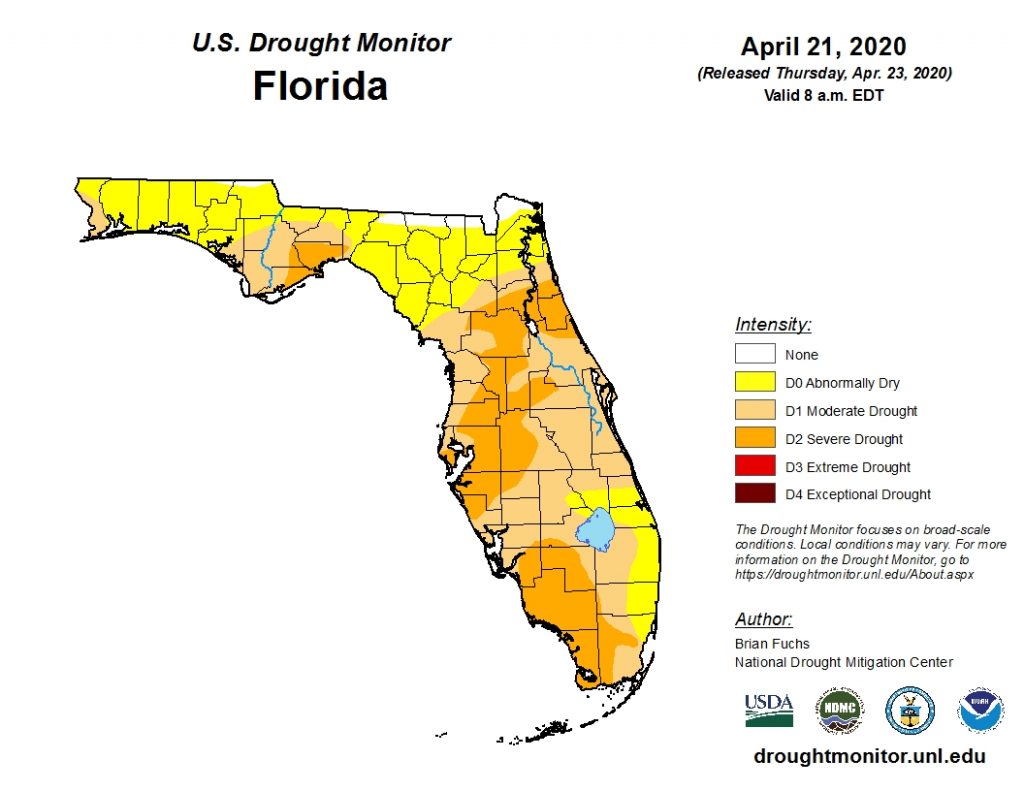By Clint Thompson
This week’s release of the U.S. Drought Monitor is expected to show improvement to Florida’s current drought conditions. That’s the belief of David Zierden, a state climatologist at Florida State University’s Center for Ocean-Atmospheric Prediction Studies.

“I anticipate the drought monitor will show improvement, especially in north Florida. Right now, it seems the driest part of the state is down in southwest Florida, around the Big Cypress National Preserve and the Naples area. That’s looking to be the driest part of the state right now, after these recent rains,” Zierden said. “Now that we’ve been in this cycle of one storm after another and bringing frontal and low-pressure systems that bring rains to the state, we’re at least holding our own if not easing the drought situation.”
Record Heat In March
According to last week’s U.S. Drought Monitor, the central and southern parts of Florida were either in moderate drought or severe drought. It’s a continuation from March when there was little rainfall and extreme temperatures.
“Especially the month of March was record-setting warm here in the state of Florida, like 7.1 degrees warmer than normal for March. For a state-wide average, it was definitely a record. On top of that, much of the peninsula, basically from Gainesville south, only received a few hundredths or a few tenths of an inch of rain during March. That’s what really accelerated the onset of drought quickly and pretty dramatically,” Zierden said.
Water Shortage in SW Florida
The drought has been so bad in the southwest part of the state that, according to a press release, the Southwest Florida Water Management District issued a Phase I Water Shortage for the District’s central and southern regions on Tuesday. This includes Charlotte, DeSoto, Hardee, Highlands, Hillsborough, Manatee, Pasco, Pinellas and Sarasota counties.
The primary purpose for a Phase I water shortage is to alert the public that watering restrictions could be forthcoming.
A Phase I water shortage order does not change allowable watering schedules, however it does prohibit “wasteful and unnecessary” water use.
Zierden said the recent rains should ease the state into the summer thunderstorm rainy season.
“These rains in April have really been important and help make this transition into the summer rainy season much easier than it would have been if we would have had a dry April,” Zierden said.









